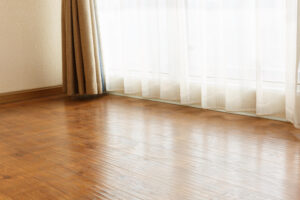Off-Gassing from Hardwood Floors: Understanding Formaldehyde and Indoor Air Quality
When installing new hardwood floors or refinishing existing ones, many homeowners are concerned about off-gassing, particularly from formaldehyde. This chemical, commonly found in adhesives, finishes, and engineered wood products, can impact indoor air quality and health. Understanding formaldehyde off-gassing and how to minimize its effects can help you maintain a safer and healthier home environment.
What is Formaldehyde?
Formaldehyde is a volatile organic compound (VOC) used in various building materials, including pressed wood products, adhesives, and finishes. It is colorless but has a strong odor and can be released into the air over time—a process known as off-gassing.
How Does Off-Gassing Occur in Hardwood Floors?
Hardwood floors can off-gas formaldehyde in a few ways:
- Engineered Wood Products – Plywood, laminate, and engineered hardwood may contain adhesives with formaldehyde that release gases into the air.
- Finishes and Sealants – Some wood finishes, varnishes, and stains contain VOCs, including formaldehyde, which can continue to evaporate for weeks or months after application.
- Subfloor Materials – Plywood or composite wood products used beneath hardwood flooring can also contribute to off-gassing.
Health Concerns of Formaldehyde Exposure
Exposure to formaldehyde can cause short-term and long-term health effects, including:
- Irritation – Watery eyes, sore throat, coughing, and skin irritation.
- Respiratory Issues – Aggravation of asthma and other breathing problems.
- Headaches and Nausea – Sensitivity to formaldehyde can trigger dizziness and nausea.
- Long-Term Risks – Prolonged exposure to high levels of formaldehyde has been linked to certain cancers, according to studies by the Environmental Protection Agency (EPA).
How to Reduce Formaldehyde Off-Gassing in Your Home
If you are installing new hardwood floors or concerned about off-gassing from existing ones, consider these strategies:
1.Choose Low-VOC or No-VOC Products
- Opt for solid hardwood instead of engineered wood with adhesives.
- Look for flooring certified by organizations like FloorScore, GREENGUARD, or CARB Phase 2 compliance, which regulate formaldehyde emissions.
- Use water-based, low-VOC finishes instead of traditional solvent-based ones.
2.Improve Ventilation
- Open windows and use fans to allow fresh air circulation, especially after installation or refinishing.
- Use an air purifier with an activated carbon filter to help absorb VOCs.
3.Let Flooring Off-Gas Before Installation
- If possible, let new flooring air out in a well-ventilated space before installing it inside your home.
4.Maintain Proper Humidity Levels
- Higher humidity levels can increase off-gassing, so keep indoor humidity between 30-50% to minimize VOC emissions.
5.Test Your Indoor Air Quality
- Use an indoor air quality monitor to detect formaldehyde levels.
- If levels are high, consult a professional for further assessment.
Final Thoughts
While formaldehyde off-gassing from hardwood floors can be a concern, being mindful of the materials you choose and taking steps to improve ventilation can significantly reduce exposure. By selecting eco-friendly flooring options and maintaining good indoor air quality, you can enjoy the beauty of hardwood floors without compromising your family’s health.
Would you like help choosing low-VOC flooring options? Contact us today for a free quote!


